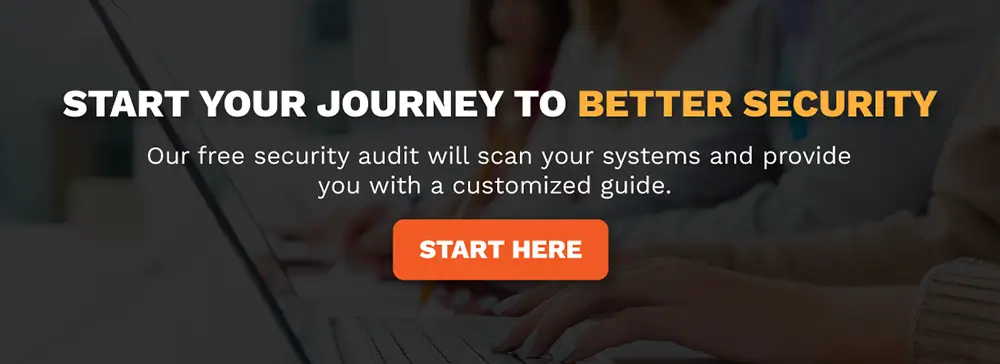TL;DR: SOC 2 compliance isn't mandatory but necessary for any business managing or storing customer data. Although getting SOC 2 certified can be time and resource-intensive, it's definitely worth the effort to ensure privacy, security, and regulatory compliance.
In the current threat landscape, cybersecurity is a significant concern. While maintaining privacy and security is a considerable challenge, it gets more complicated when partnering with third-party business partners like cloud computing vendors, SaaS platforms, and managed services providers.

This makes Service Organization Control 2 or SOC 2 compliance audits and reports critical (but not mandatory) to modern business. SOC 2 is similar to the Payment Card Industry Data Security Standard (PCI DSS), but the only difference is that the latter only applies to payment card processors. SOC 2 evaluates businesses and processes to ensure that appropriate intrusion detection, malware and ransomware protection, firewalls, and more are in place.
When you pass a SOC 2 audit, it means that your organization has adequate data protection controls and systems in place to secure sensitive customer data. Maintaining compliance also helps businesses build credibility, gain a competitive advantage, and better manage a security incident.
SOC 2 is the second of three audits and reports that are essential to information security. The SOC 2 audit process helps ensure that service providers follow best practices and securely manage sensitive data.
If you're thinking about partnering with a Software-as-a-Service (SaaS) provider or moving your on-premises infrastructure to the cloud, SOC 2 compliance is a minimum requirement. Created by the American Institute of Certified Public Accountants (AICPA), SOC 2 compliance is built on Trust Services Principles and Criteria. The AICPA shorted it to the Trust Services Criteria, but the acronym TSP remains the same (but you'll also come across the acronym TSC). It's an important part of the Statement on Standards for Attestation Engagement (SSAE).
The five TSPs are:
- Security: To protect Personally Identifiable Information (PII) against unauthorized access. This data can be anything from the customer's name, address, social security number, health data, and more.
- Availability: To ensure that systems and data are made available as per Service Level Agreements (SLAs). It assesses the infrastructure, software, and maintenance information to determine if your business took appropriate steps to mitigate the risk of external threats.
- Confidentiality: To protect against the unauthorized disclosure of sensitive information. This includes confidential company data like financial information and intellectual property.
- Processing integrity: To protect against human error. Processing integrity protocols help negate accidental, unauthorized manipulation and ensure that data processing operations are authorized, accurate, and complete.
- Privacy: To protect and govern the collection, retention, and disposal of customer data, including PII.
However, you get to choose which trust principles you get audited for, and the choice often depends upon what's most important to your customers. The five principles aren’t a prescriptive list of tools, processes, or controls. Instead, it's a criterion that’s followed to achieve data security and customer confidence. Each enterprise can adopt procedures and best practices that relate to its own operations and objectives.
But did you know that the five trust services criteria are only one part of the TSP? There are actually 17 principles grouped into the following five categories:
- Communication and information
- Control activities
- Control environment
- Monitoring activities
- Risk assessment
This process doesn't end once you receive SOC 2 certification. Instead, it's the guidelines or policies that dictate how you manage sensitive customer information on a daily basis.
What Is SOC 2 Certification?
SOC 2 certification is essentially an audit report that verifies the "trustworthiness" of a vendor's products and services. It's a standard approach to assess the risks associated with outsourcing business processes that involve sensitive data.
Companies that establish and follow strict information security policies that overlap the trust criteria should have no problem obtaining SOC 2 certification. Preparing for a SOC 2 audit can take between six months to a year. If you have never done it before, you'll probably have to make many changes to your existing cybersecurity procedures and policies.
But it's worth the effort as SOC 2 compliance comes with a bunch of benefits for service organizations, including:
- Robust security policies
- Organized documentation
- Improved risk management policies and procedures
- Promotion of good habits and cyber hygiene
- The creation of new opportunities and revenue streams
- A competitive advantage in the marketplace
What Is the Difference between SOC Type I Compliance and SOC 2 Type II Compliance?
SOC Type I is a quick audit that examines a company's adherence to all five principles in the trust service criteria. It essentially describes what systems are in place and provides assurances that the company took appropriate steps to maintain data security at a specific point in time.
On the other hand, SOC 2 Type II takes place over a more extended period (usually about six months). This approach demands additional confirmation by testing the effectiveness of the controls that are in place over a period of time.
As such, security experts often recommend companies to choose SOC 2 Type 2 compliance because it's a proactive approach to security with long-term benefits.
The key difference here is that the SOC 2 Type 1 report describes the systems and the suitability of access controls, system and organization controls, and security controls. SOC 2 Type 2 reports include everything in Type 1 reports and explores how well they work over a predefined period.
The SOC 2 audit doesn't require any financial reporting controls. This is because the SOC 1 audit report goes over the company’s finances. SOC 2 concentrates on non-financial controls related to the five TSPs.
At the end of the investigation, the auditor provides a written evaluation. The information contained in this report reflects the SOC audit firm's opinion, and there's no guarantee that it'll be positive. So, make sure that you’re ready for a SOC 2 audit.
What Are the SOC 2 Compliance Requirements?
To obtain and maintain SOC 2 compliance, service providers have to ensure that adequate controls are in place to support the five principles in the trust service criteria. In this scenario, it's best to conduct an internal audit before engaging an external accounting firm.
Before contacting a SOC auditor, it's also best to evaluate how much time and resources it'll take to obtain SOC 2 certification. You'll have to think about your current compliance posture and the costs associated with hiring a SOC 2 auditor.
At this juncture, it's crucial to note that there isn't a fixed price structure or timescale for SOC 2 certification. Every business is different and has its own unique requirements. The bigger the organization, the more complicated it'll be to audit.
So, it's important to understand that you'll be looking at highly variable costs. If you're unprepared, get ready for the audit to take anywhere from four months to 18 months. However, the SOC 2 audit isn't mandated by any regulatory agency or governing body. Although it's completely voluntary, it's vital to consider when managing PII.
Do Some Service Organizations Need Both SOC 1 and SOC 2 Compliance Reports?
Sometimes, companies are asked to provide both SOC 1 and SOC 2 certificates. This is because companies like managed services providers and data centers offer services to businesses across a wide range of industries. Therefore, some clients will demand SOC 1 reports to ensure that adequate internal financial controls are in place.
There's also an option of getting a SOC 3 compliance report. While it's similar to a SOC 2 report, the primary difference is that SOC 3 reports aren't as comprehensive. They are often used for general purposes and are widely shared. For example, marketing campaigns often make use of SOC 3 reports to ensure compliance.
However, SOC 3 compliance can be highly suitable for small and medium-sized businesses that don't handle oceans of data. Furthermore, it's ideal as it isn't time and resource-intensive like SOC 2 certification.
How Do You Get Ready for a SOC 2 Audit?
Getting SOC 2 certified takes some work. Whether you choose to go with SOC 2 Type 1 or SOC 2 Type 2, you have to engage in this activity regularly every six to 12 months to ensure thorough compliance. According to AICPA's AT Section 801, reporting periods shorter than six months won’t be useful for both auditors and organizations alike.
SOC 2 Audit Checklist:
1. Define Your Objectives
Before you contact your CPA, you have to decide which SOC 2 certification you're going to get. To save money and time, it's crucial to have a clear goal. Then it's important to ascertain if it comes in conflict with other business goals, leads to downtime, and so on.
Most often, businesses choose to get SOC 2 certified to satisfy their clients and gain a competitive advantage. However, you have to make a decision based on your available resources.
2. Determine Which Controls Will Be Evaluated
Once you have a clear business goal, you can also determine which controls are evaluated based on the TSPs. If you need help figuring out which TSP requirements relate to your business offering, take a look at what contractual, legal, or other obligations you might have when managing data.
The criteria present in all SOC 2 audits is security. The other four principles are optional, and you can decide to include some or all based on your objectives. You can also determine the scope of the overall project based on customer needs. Think about what will make them feel secure about your company managing their sensitive data. Should you emphasize process monitoring? What about encryption? The correct answers to these questions depend on your customers and your unique business goals.
However, if your business is already governed by another regulatory body (for example, CCPA, GDPR, or HIPAA), you can choose to skip the privacy trust service criteria. This is because you're already following strict protocols to ensure privacy and compliance.
3. Engage an Auditor
Once you're sure about what you want to do, you can reach out to an auditor. In this scenario, it's always best to choose an established auditing firm with lots of experience within your industry.
Once the contracts are signed, the auditing firm will assign some employees to work closely with you. These are usually professionals who will analyze your organizational processes and security measures.
4. Select the Type of SOC 2 Report
If this is your first time, then you can also request a SOC 2 Type 1 report. This is because you won't have any prior reports or policies or a record of compliance. Once you establish an operational SOC 2 policy, you can initiate regular assessments of your performance against it.
Once the initial report is complete, it'll be best to go for SOC 2 Type 2 as it's much more valuable to all stakeholders. After all, it's comprehensive and includes all the information in the Type I report.
5. Get Ready for Continuous Improvement
Once you have defined your goals, chosen the type of report, and defined its scope, it's time to collect all relevant operational documents, privacy policies, security control policies, and internal assessment documents.
Do a gap analysis and identify what areas can be improved before you get the CPAs involved. Your focus depends on the trust services criteria principle(s) you're aiming for. If there's room for improvement, you'll have to devise an improvement plan with a timeline to meet your targets.
Once you've completed all improvements, check if they work as intended. If everything is perfect, you can schedule a time to meet with your auditor and get the SOC ball rolling. The auditor will come on-site, interview staff, review documents, and more. So, make sure that everyone in the organization is ready for such situations.
As you can see from the above, SOC 2 compliance takes a lot of work, but that's not a reason not to do it. This is because it helps businesses ensure privacy, security, and compliance. After all, you don't want to tell your customers that you don't have SOC 2 certification when they ask for a report.
Categories: Security, Cyber Security, IT Management, Network Security, Proactive Network Security, Cloud Computing Security, IT Security











